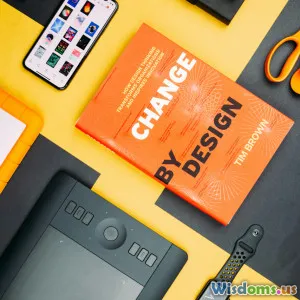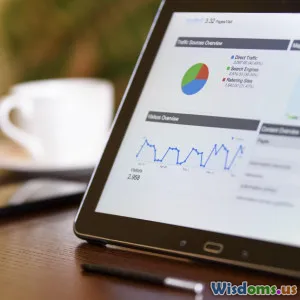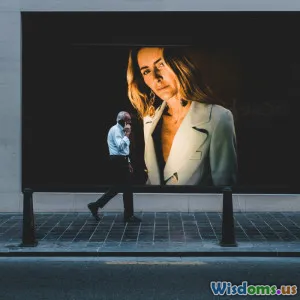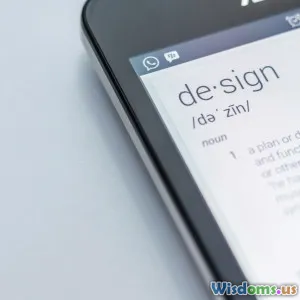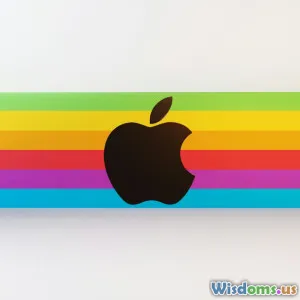
Are Bold Colors Outdated in Logo Design Experts Take Sides
8 min read Explore the debate on bold colors in logo design as experts reveal if these vibrant hues remain impactful or are becoming passé. (0 Reviews)
Are Bold Colors Outdated in Logo Design? Experts Take Sides
From neon pinks to saturated blues, bold colors have long been a cornerstone in logo design, grabbing attention and helping brands carve an identity. However, as design trends continuously evolve, questions arise: Are bold colors becoming outdated in logo design? Or do they still hold their ground in a crowded marketplace?
In this article, we dive deep into this heated debate by gathering expert perspectives, relevant examples, and the psychology behind color usage in branding. Whether you're a designer, business owner, or enthusiast, this comprehensive look will offer clarity on whether it's time to reconsider bold hues or celebrate their enduring impact.
The Power of Bold Colors in Logo Design: A Historical Compass
Bold colors have been synonymous with modern and impactful design since the mid-20th century. Brands like Coca-Cola's vibrant red, IKEA’s bright yellow and blue, and T-Mobile’s magenta reveal how bold colors help in instant brand recall and differentiation.
In fact, a study by the University of Loyola, Maryland, showed that color can increase brand recognition by up to 80%. Bold colors especially stand out when brands need to assert identity fiercely in saturated industries.
However, the rise of minimalist design in the 2010s saw a shift toward subdued palettes, raising questions about bold color's longevity in current contexts.
Arguments That Bold Colors Are Becoming Outdated
1. Minimalism’s Dominance and Subtlety
Minimalist design, characterized by simplicity, clean lines, and neutral palettes, has dominated digital and print branding. This trend emphasizes black, white, and muted tones to appeal to a sophisticated, often millennial and Gen Z audience.
Prominent brands such as Apple and Spotify (in certain branding elements) employ relatively softer tones or rely on monochrome schemes, reflecting the trend.
According to designer and trend analyst, Erin Emory, "Bold colors can feel intrusive or overwhelming when the overarching design language shifts toward calm and subtlety. Minimalist palettes create a timeless feel that can transcend fleeting trends."
2. Digital Consumption and Eye Strain
With screen time rising dramatically, consumers may subconsciously shy away from aggressively bright colors which can strain the eyes during long exposures. Subtle and neutral shades, combined with ample white space, offer resting points for viewers' eyes, enhancing user experience.
3. Risk of Appearing Outdated Quickly
Bold colors often reflect the zeitgeist of a specific time. Neon and bright color waves, for example, were hugely popular in the 80s and 90s, then gave way to muted palettes. Using the wrong bold shade can tether a brand’s logo to a fleeting trend, risking premature obsolescence.
Why Bold Colors Are Far From Dead
1. Emotional Impact and Brand Personality
Color psychology strongly supports the use of bold colors for conveying emotions and building strong brand identities. For instance, red often conveys excitement and passion, while orange can evoke creativity and enthusiasm. Bold colors set a confident tone and attract quick attention essential for market visibility.
2. Standing Out in a Cluttered Marketplace
The digital space is flooded with competing logos and advertisements. Bold colors cut through this noise, catching consumer eyes not only online but also on physical signage and packaging.
A great example: Google's logo infuses bold primary colors to embody playfulness and approachability.
3. Versatility With Modern Technologies
With advanced printing techniques and digital displays capable of rendering vibrant, accurate colors, the technical barriers that once made bold colors risky are diminishing. Brands can confidently apply bright hues knowing they will perform consistently across media.
Designer Samantha Rivera affirms, "When used thoughtfully alongside negative space and balanced shapes, bold colors can feel contemporary rather than garish. They’re not outdated—they evolve with execution."
Expert Opinions: Divided Yet Insightful
A survey of seasoned logo designers and branding experts reveals a nuanced picture:
-
Anna Park, Lead Designer at CreativePulse: "Bold colors are tools, not rules. If your brand personality demands energy and memorability, bold hues work brilliantly. The key is ensuring they resonate with your audience's expectations."
-
Mark Johnston, Brand Strategist: "We see cyclical color trends. While muted palettes reign today, bold colors will rebound as brands crave distinctiveness again. Foresight and test audiences help decide deployment."
-
Lauren Chu, UX Specialist: "From a user experience standpoint, overwhelming color schemes can hinder accessibility. However, when balanced, vibrant logos enhance recognition and brand loyalty."
Practical Tips for Using Bold Colors in Modern Logo Design
-
Balance Bold Colors With Neutral Elements: Use neutrality to temper vibrancy and create harmony.
-
Consider Audience and Industry: Bold colors suit energetic, creative sectors but may not fit conservative industries.
-
Test on Various Mediums: Ensure colors retain impact and accessibility across digital and physical platforms.
-
Evolve Bold Choices With Trends: Experiment with hues and saturation levels instead of defaulting to classic bolds.
-
Use With Purpose: Avoid bold colors just for the sake of it; use them strategically to express brand values and narratives.
Conclusion: The Verdict Is Not Black or White
Are bold colors outdated in logo design? The answer hinges on context, execution, and brand goals. While minimalism and muted palettes gain popularity, the vibrant energy and memorability of bold colors continue to hold significant value.
Ultimately, bold colors are not relics of the past; rather, they're evolving elements best applied with thoughtful strategy. Forward-thinking brands and designers embrace boldness selectively, marrying it with balance and purposeful design. This ensures bold colors remain a living, dynamic part of the visual branding lexicon — neither passé nor immortal but perpetually adaptable.
Whether to pivot toward bold hues or lean into subtlety depends less on trends and more on authentic connection to the brand’s story and audience. In branding, color is language. So choose your words—and hues—with intention.
References:
- University of Loyola, Maryland, study on brand color recognition
- Interviews with Erin Emory, Samantha Rivera, Anna Park
- Google, Coca-Cola, and T-Mobile branding case studies
- UX research on color impact and accessibility
Rate the Post
User Reviews
Other posts in Logo Design
Popular Posts










